
(a)
Abstract:In order to investigate the effect of piles on tooth restoration and their service life, micro-computed tomography (CT) was used to scan the first maxillary canines by establishing a three-dimensional finite element model for pile restoration. The stress distributions after tooth restoration with different pile materials were analyzed using a 100 N bite force. Then, theS-N fatigue characteristic curve of zirconia material was obtained using experimental data. The fe-safe fatigue analysis software was used to study the service life of zirconia piles in teeth. The static analysis results demonstrate that when fiber piles are used to repair, the stress from the dentin neck is larger than that by zirconia piles, but the stress from the apical of the dentin is smaller than that by zirconia piles. Besides, the stress exerted by fiber piles is lower than that by zirconia piles. Furthermore, the fatigue analysis results indicate that under normal conditions, zirconia piles can be used in teeth for over 20 years. Compared with fiber piles, zirconia piles have a better effect on the repair of tooth defects.
Key words:fiber pile; zirconia pile; finite element analysis; fatigue life
Large area defects on teeth caused by dental caries or trauma are very common in the clinical department of stomatology. With the improvement of the root canal treatment technology and dental material science, people have increasingly paid attention to their living standards and health consciousness. Besides, the residual root and crown have received more concern than before. In this context, ceramic materials have become the first choice of repair materials for dental clinicians[1], because of their advantageous features, such as a gloss approximately similar to that of natural teeth, excellent biocompatibility, perfect light propagation and reflection which can successfully reproduce the translucence degree and color depth of natural teeth, smooth ceramic surface after polishing and glazing, no degradation in the oral environment, and wear resistance similar to that of natural teeth.
A ceramic pile is composed of a cast glass ceramic pile, a glass-infiltrated ceramic pile and a zirconium pile (ZrO2). Zirconia ceramics can be stable in the oral cavity, without the possibility to release harmful impurities, degrade, or cause cell transformation, non-mutagenic and carcinogenic effects[2]. After root canal treatment, the support force from the residual root of anterior teeth is decreased, and a post-core system is needed to enhance the retention and support for the crown restoration. The need for a post-core place in the repair process will lead to local missing tooth, which causes a significant decrease in the strength of the teeth in restoration. Therefore, for its features of outstanding strength and toughness as well as good stability and abrasion resistance, ZrO2 ceramic has become the first choice for making piles.
Toksavul et al.[3] suggested that zirconia ceramic piles can be applied in clinical treatment. However, zirconia ceramics have a fatigue phenomenon in the oral environment. In a low temperature and humid environment, tetragonal zirconia (t-ZrO2) can transit to single phase (m-ZrO2) owing to the phase transition, namely the effect of low temperature aging (i.e. low-temperature degradation,LTD)[4-5]. The moist environment, low temperature and cyclic stress will lead to the decrease in the mechanical properties of all ceramic materials and the fracture of the prosthesis. In addition, the manufacturing process of zirconia ceramic has a great influence on its anti-fatigue performance. Consequently, this paper focuses on the study of the effect of zirconia on the stress and fatigue properties.
1.1 Materials
This paper chooses the first maxillary canines as its research object for their complete dissection form. The Micro CT system was used for the whole scan, and the out put results (Dicom files) were imported into the MIMICS10.0 software to construct a 3D tooth structure model. A medullary cave was made in the interior of the tooth structure (as shown in the yellow zone in Fig.1), filled with different materials. A 3-D FEM model of the maxillary canines was established (see Fig.1). Fig.1 (a) is the finite element calculation model for dental restoration of fiber post. Fig.1 (b) is the finite element calculation model for the dental restoration of the zirconia post.
1.2 Methods
In this paper, we only select different materials of pile to repair the teeth. In order to simulate the stress of the teeth accurately, the material in the model is assumed to be linear elastic material and its parameters are shown in Tab.1.

(a)
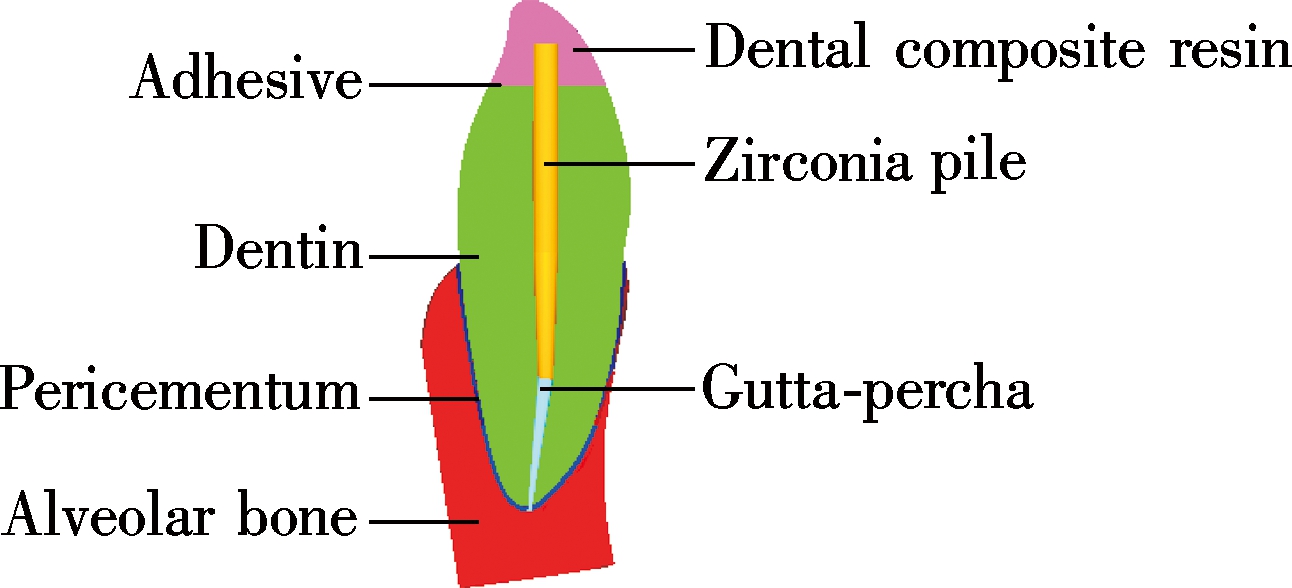
(b)
Fig.1 Different pile repair teeth. (a) Fiber pile; (b) Zirconia pile
Tab.1 Mechanical properties of dental structures and materials[6-8]

MaterialElasticmodulus/PaPoissonratioAlveolarbone13.7×1090.30Pericementum68.9×1060.45Dentin18.6×1090.31Adhesive8×1090.30Gutta-percha0.69×1060.45Fiberpile14×1090.28Zirconiapile200×1090.33Dentalcompositeresin8.3×1090.28
Due to the complicated geometry model of teeth, the Hypermesh software is used to create the finite element mesh. According to the different gradients of the geometrical size and the stress of the parts, different density tetrahedron element models are adopted. Then, Abaqus software is used to analyze the Inp files and export the results.
The resin material is relatively soft, so it is used to load the bite force on a small piece of unit area of the tooth mesh. In this paper, we use 20 cell nodes to achieve the added 100 N bite force with each node loaded 5 N. The six degrees of freedom of all nodes on the bottom surface of the alveolar bone are fixed (see in Fig.2).
The static analysis results from Abaqus software are introduced into the fe-safe software to analyze the fatigue life of zirconium oxide. The teeth of the chewing load spectrum and the S-N (stress-life) curve of the material are needed when the fe-safe software is used to analyze the fatigue life. According to report[9], scholars measured the masticatory force in different food chewing by measuring masticatory muscle EMG activity with electromyography (EMG).
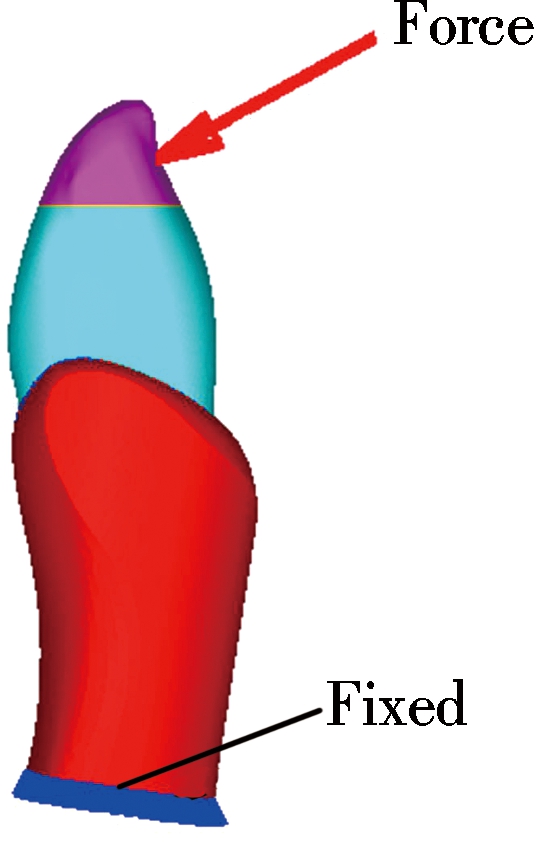
Fig.2 Boundary conditions for static analysis
The average range of chewing force is (165±135) N, which is assumed to be a normal distribution. The whole process of masticatory cycle includes the opening and closing phase and the occlusal phase. A chewing cycle is 0.875 s and shows a pulsation type distribution. The average of the chewing force (alternating load) is σm=82.5 N, and the amplitude is σa=82.5 N. The bite force loaded in the static analysis of the teeth is 100 N, so the stress in the chewing load spectrum needs to be reduced by 100 times, as shown in Fig.3. He[10] tested five groups of samples at different loading rates and inferred the S-N data of the ceramics according to the results (see Tab.2) by a dynamic three-point bending test.

Fig.3 The tooth chewing load spectrum
Tab.2 Calculation results of fatigue life of zirconia

No.Force/N5010015020030040050060012.93×10277.95×10183.94×10145.42×10117.56×1071.60×1051152.568.86023.95×10271.07×10195.32×10147.32×10111.03×1082.15×1051557.1111.96933.77×10291.03×10215.08×10167.00×10139.80×1082.05×107148724.901143.28743.30×10288.97×10194.44×10156.12×10128.57×1071.80×10613002.6799.95657.13×10271.94×10199.59×10141.32×10121.85×1073.88×1052807.5521.582Mean8.50×10284.60×10191.10×10161.60×10132.50×1084.60×10633448.96257.130
The Origin software is used to fit the curve based on the date in Tab.2 and the curve is shown in Fig.4.In the fe-safe software, the zirconia material is defined using the curve data above. The Goodman method is used to modify the fatigue life because the ceramic material is a type of brittle material, and the 1×107design life is defined. The nephograms of the fatigue life and fatigue safety factor are obtained through the post-processing module of Abaqus. The software operation process is shown in Fig.5.

Fig.4 The S-N fitting curve of zirconia
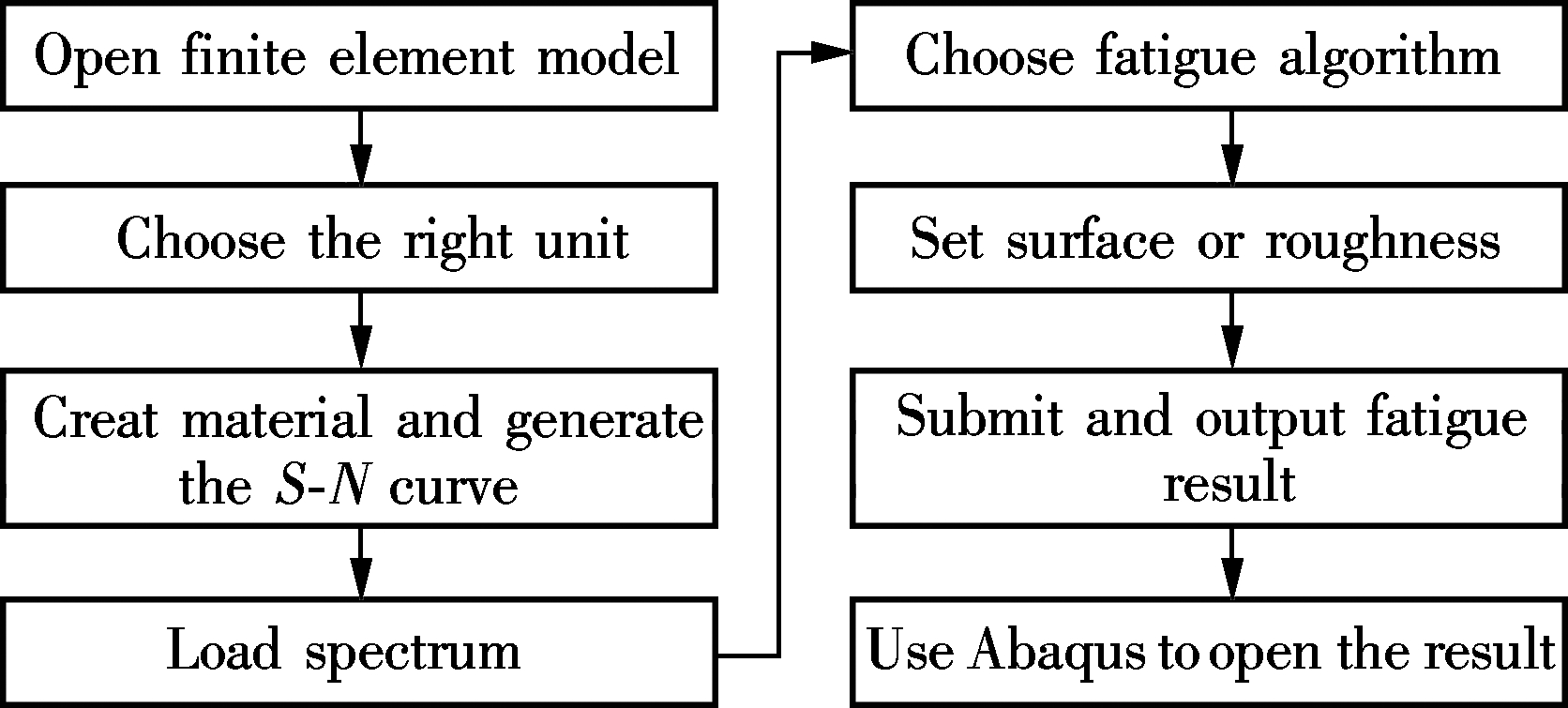
Fig.5 Fatigue analysis and calculation process
By means of the three-dimensional finite element method, the stresses distributions of different parts of the tooth structure under different piles are obtained. The first principal stress distributions of the tooth with fiber pile and zirconia pile are shown in Fig.6. The dentin and post core displacements of two different kinds of piles are shown in Fig.7. The stresses of different parts of tooth structure under different piles are shown in Tab.3.
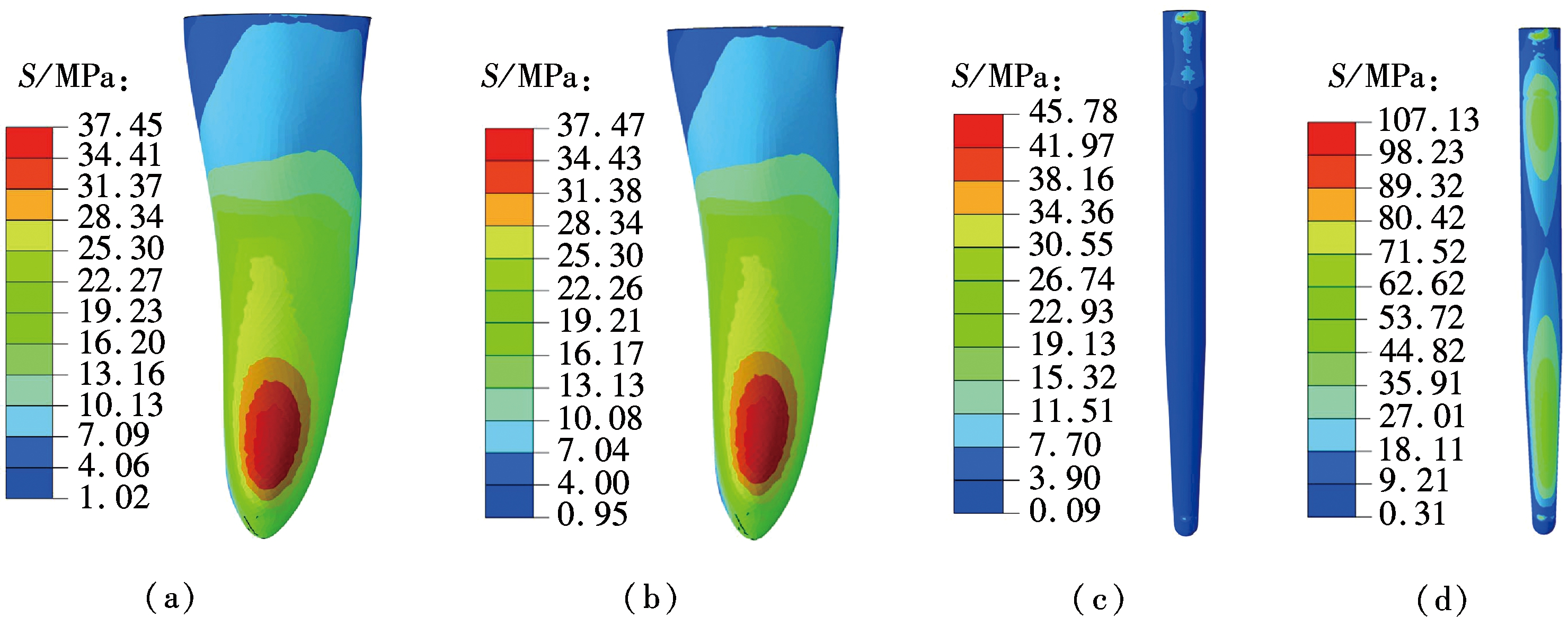
Fig.6 Stress of the dentin in different piles restoration and piles in the tooth. (a) Dentin in fiber pile restoration; (b) Dentin in zirconia pile restoration; (c) Fiber pile; (d) Zirconia pile

Fig.7 Displacement of the dentin in different piles restoration and piles in the tooth. (a) Dentin in fiber pile restoration; (b) Dentin in zirconia pile restoration; (c) Fiber pile; (d) Zirconia pile
Due to the direct contact between the pile and the dentin, the stress of different parts of dentin based on two types of piles repair are compared in Tab.4.
The fatigue life of the zirconium pile analyzed by the fe-safe software is shown in Fig.8.
The average range of the chewing force is nearly about 30 to 300 N and the average chewing is about 4 000 times a day and 1×106 a year, that is to say, the piles probably need to undergo 107 times of chewing cycle in the whole service time[11]. It can be known from the fatigue life that, the shortest life part of the pile is 106.89times. This part is the stress concentration part, which basically meets the requirements. Therefore, we can estimate that the average life of piles is almost 20 years.
Tab.3 The maximum stresses of different parts of two models MPa

MaterialsPericementumDentinAlveolarboneGutta-perchaPileFiberpile10.6237.4527.710.003845.78Zirconiapile10.6237.4727.710.0039107.13
Tab.4 The stresses of different parts of dentin in two models MPa

MaterialsNeck1/3Middle1/3Apical1/3Pile/dentininterfaceFiberpile10.9427.4137.4512.71Zirconiapile10.8826.9637.4739.80
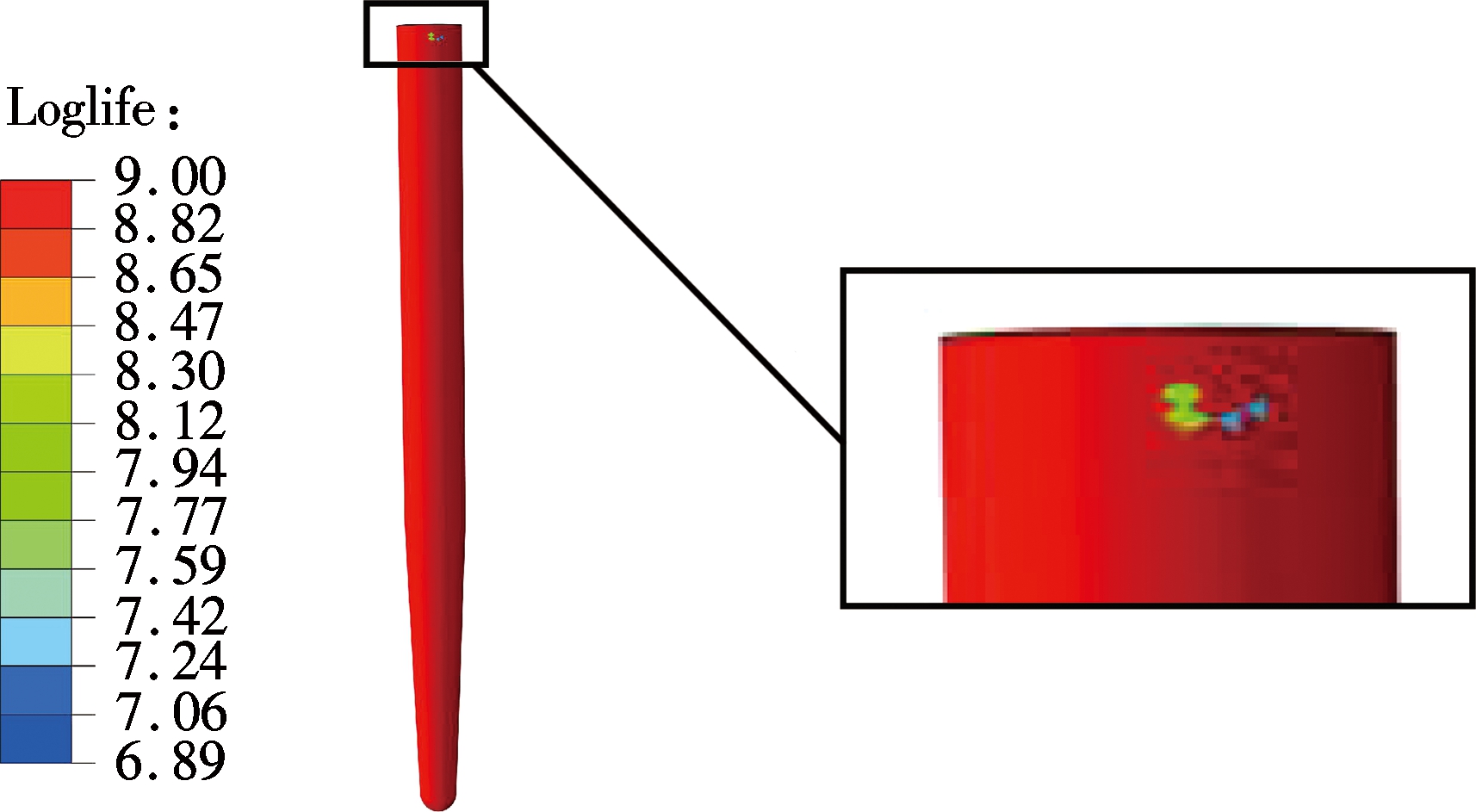
Fig.8 The fatigue life of the zirconia pile in the restoration of teeth and the local image
The material of pile is one of the important factors influencing the stress distribution on tooth tissue to be repaired. According to the biomechanical principle, the force will be absorbed and transmitted by the pile after repair, which will bring about increased stress on the dentin in the end of pile and reduced stress on its upper part. The pile with high elastic modulus can accumulate more stress potential, and transfer stress to the adjacent parts where the root of dentin has a wedging effect, which may be prone to the root of longitudinal fracture. As a result, some scholars believe that it is better to choose the material of pile with elastic modulus which is close to that of dentin and the strength of material is as much as or higher than that of dentin. Hence, the pile, the binder and the dentin can form a unified whole, with a better biomechanical effect and effective resistance to the fracture of tooth tissue[7-8, 12-13]. Nevertheless, other scholars believe that the low elastic modulus of the pile can produce a higher stress in the root and the edge of the restoration, which greatly increases the failure risk of the bond between the pile and the dentin[6, 14]. From the finite element analysis results in this paper, it can be seen that the stress on the root tip of tooth is slightly larger than that on the fiber pile when the zirconia pile is repaired. It is not difficult to explain. When the pile is applied in teeth restoration, it works as a long lever in the teeth. The elastic modulus of fiber pile is far less than that of the zirconia pile. In power transmission, fiber pile deformation is relatively large, and thus the pressures on the neck and middle parts are too large. In comparison, the zirconium pile deformation is small, which can transfer the force to the apical of dentin and cause the pressure on the apical of dentin to be slightly larger than that on the fiber pile. In accordance to Fig.7 and Fig.8, the displacement and deformation are larger in the neck and middle parts of dentin in tooth repair with fiber pile, which can be proved. Santos et al.[15] also thought that the fiber pile can exert more stress on the dentin, so the stress on the pile/dentin interface is small. Nonetheless, the zirconia pile contrasts the fiber pile. In the pile/dentin interface, more stress is formed, which reduces the stress on the neck part of dentin. This shows that we should pay more attention to the treatment of the pile/dentin interface in the use of zirconia. The appropriate bonding methods and materials should be selected in order to improve the service life of the repair body[16].
For the elastic modules of the two kinds of piles in this paper, one is smaller, and the other is larger, compared with the dentin. Additionally, the stresses on the surface of dentin contrast each other. From the clinical perspective, the service life of fiber pile is about ten years, and common damage generally occurs in the neck of crown. Zirconia pile can well reduce the stress on the neck of crown, and thereby lessen crown damage. For this reason, it is assumed that the repair effect of zirconia pile is better compared with fiber pile, and it is expected that an elastic range of material can be found. Material in this range utilized to repair teeth can make the average stress on the tooth relatively small and the stress on dentin surface relatively uniform. Moreover, it can prevent the repaired pile from not only the neck fracture caused by a low elastic modulus but also the apical fracture caused by a high elastic modulus.
The S-N curve and fatigue limit of the material can only represent the fatigue property of the standard smooth specimens. In the actual process of dental restoration, the pile can be varied, and the main influence factors for the fatigue limit of the pile are listed as follows: 1) Pile geometry and surface roughness; 2) Random variation of bite force; 3) Acid and alkali corrosion of oral saliva; 4) Changes in the oral environment temperature, etc. In the course of finite element static calculation and fatigue calculation, all the materials are assumed to be isotropic materials, which will bring errors to the simulation itself. As all the materials in the oral cavity are a few indicators for fatigue testing of the system, they can only be utilized to replace the industrial material parameters, which will increase the possibility of failure.
In this research, three-dimensional finite element models are established for the pile restoration with different materials of the first maxillary canines, and a detailed mechanics analysis is made. The results show that different materials have disparate influences on the stress of dentin. In restorations with different piles, the stresses on the dentin are the largest. However, the material with lower elastic modulus causes the stress on the neck of dentin to be larger compared with other materials. In view of this, long-term application of that kind of material may result in damage to different parts of dentin. Combined with clinical manifestations of fiber posts, it can be found that longer use time of zirconia pile can better reduce the stress on the neck of dentin and lessen coronal damage. Given this, zirconia pile is better than fiber pile. Furthermore, it is believed that a suitable pile material can be found, so that the average stress on the tooth can be reduced to the minimum.
Based on the fatigue analysis of zirconia pile utilized for teeth repair, a conclusion is drawn, namely that the lifetime of the point with the maximum stress on the zirconia pile is the shortest. As can be seen from the graphics of fatigue life, a zirconia pile tends to break off at the fracture surface and the 1/3 end of the tooth. Finally, the useful service life of zirconium pile in human teeth can reach almost 20 years on the basis of relevant experimental data. In consequence, the research presented in this paper lays a solid foundation for the wide application of zirconia pile in clinic.
References:
[1]Bassi F, Carossa S, Pera P, et al. All-ceramic restorations: An overview [J]. Minerva Stomatologica, 1998, 47(9): 425-430.
[2]Taskonak B, Griggs J A, Mecholsky J J Jr, et al. Analysis of subcritical crack growth in dental ceramics using fracture mechanics and fractography [J]. Dental materials: Official Publication of the Academy of Dental Materials, 2008, 24(5): 700-707. DOI:10.1016/j.dental.2007.08.001.
[3]Toksavul S, Ulusoy M, Toman M. Clinical application of all-ceramic fixed partial dentures and crowns [J]. Quintessence Int, 2004, 35(3): 185-188.
[4]Li W, Jiang L, Liao Y. Dental zirconia all-ceramic material [J]. Chinese Journal of Practical Department of Stomatology, 2010, 3(8): 455-7. (in Chinese)
[5]Seto K B, McLaren E A, Caputo A A, et al. Fatigue behavior of the resinous cement to zirconia bond [J].Journal of Prosthodontics, 2013, 22(7): 523-528. DOI:10.1111/jopr.12053.
[6]Chuang S F, Yaman P, Herrero A, et al. Influence of post material and length on endodontically treated incisors: An in vitro and finite element study [J]. Journal of Prosthetic Dentistry, 2010, 104(6): 379-388. DOI:10.1016/S0022-3913(10)60171-0.
[7]Gonzalez-Lluch C, Rodriguez-Cervantes P J, Sancho-Bru J L, et al. Influence of material and diameter of pre-fabricated posts on maxillary central incisors restored with crown [J]. Journal of Oral Rehabilitation, 2009, 36(10):737-747. DOI:10.1111/j.1365-2842.2009.01989.x.
[8]Lü L W, Meng G W, Liu Z H. Finite element analysis of multi-piece post-crown restoration using different types of adhesives [J]. International Journal of Oral Science, 2013, 5(3): 162-166. DOI:10.1038/ijos.2013.50.
[9]Zhang L. Fatigue strength reliability analysis of all ceramic crowns under the action of daily chewing [D]. Xi’an, China: Oral Clinical Medicine College, The Fourth Military Medical University, 2008. (in Chinese)
[10]He L. A fatigue research on SHOFU feldspathic ceramic [D]. Chengdu, China: Oral Clinical Medicine College, Sichuan University, 2005. (in Chinese)
[11]Zhang Z, Xu Y,Su J S. Reliability of flexural strength and subcritical crack growth of dental ceramic materials [J]. Journal of Practical Oral Medicine, 2011, 27(3): 339-342.
[12]Kaya B M, Ergun G. The effect of post length and core material on root fracture with respect to different post materials [J]. Acta Odontologica Scandinavica, 2013, 71(5): 1063-1070. DOI:10.3109/00016357.2012.741706.[13]Alharni F A, Nathanson D, Morgano S M, et al. Fracture resistance and failure mode of fatigued endodontically treated teeth restored with fiber-reinforced resin posts and metallic posts in vitro [J]. Dental Traumatology, 2014, 30(4): 317-325. DOI:10.1111/edt.12095.
[14]Ukon S, Moroi H, Okimoto K, et al. Influence of different elastic moduli of dowel and core on stress distribution in root [J]. Dental Materials Journal, 2000, 19(1): 50-64. DOI:10.4012/dmj.19.50.
[15]Santos A F, Meira J B, Tanaka C B, et al. Can fiber posts increase root stresses and reduce fracture? [J]. J Dent Res, 2010, 89(6): 587-591. DOI:10.1177/0022034510363382.
[16]Schmitter M, Rammelsberg P, Gabbert O, et al. Influence of clinical baseline findings on the survival of 2 post systems: A randomized clinical trial [J]. International Journal of Prosthodontics, 2007, 20(2): 173-178.
Citation:Lu Genfeng, Tang Wencheng, Yang Yu. Fatigue and mechanical properties of dental implant with zirconia pile[J].Journal of Southeast University (English Edition),2016,32(3):312-316.DOI:10.3969/j.issn.1003-7985.2016.03.009.
DOI:10.3969/j.issn.1003-7985.2016.03.009
摘要:为了研究桩核修复对牙体的影响及其使用寿命,基于Micro CT扫描建立桩核修复后上颌第一尖牙的三维有限元模型.对牙齿加载100 N咬合力,分析不同材质桩核修复后的应力分布状况.通过实验数据拟合氧化锆材料的S-N疲劳特性曲线,利用fe-safe疲劳分析软件,研究氧化锆桩在牙齿内部的使用寿命.结果表明:纤维桩修复时牙本质的根颈应力比氧化锆桩修复时大,而根尖的应力比氧化锆桩修复时小;纤维桩本身的应力比氧化锆桩的应力小.疲劳分析结果表明,正常咀嚼力下,氧化锆桩在牙齿内部可以使用长达20年.对比纤维桩在临床修复上的表现,氧化锆桩修复缺损牙齿效果更好.
关键词:纤维桩;氧化锆桩;有限元分析;疲劳寿命
中图分类号:R783.3
Received:2016-01-21.
Foundation item:The National Numerical Control Equipment Major Projects (No.2013ZX09008011).
Biographies:Lu Genfeng(1992—), male, graduate; Tang Wencheng (corresponding author), male, doctor, professor, tangwc@seu.edu.cn.